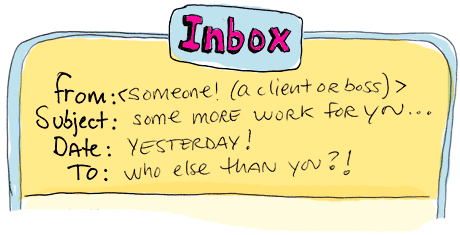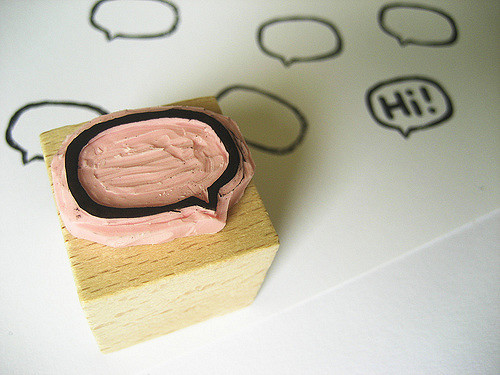 Question: I landed an interview at a company that I’m excited about. The interview process is moving really fast so I’m not sure how much time I’ll have to do a deep dive into the company or the position. How much am I really expected to know about the company during my interview? How much time do I really need to spend researching?
Question: I landed an interview at a company that I’m excited about. The interview process is moving really fast so I’m not sure how much time I’ll have to do a deep dive into the company or the position. How much am I really expected to know about the company during my interview? How much time do I really need to spend researching?
Answer: This probably isn’t the answer you want to hear, but the more research you do the better! Think of all the things that could go wrong if you don’t do your research: You could show up to a laid back start up in a suit and tie. You could mention a product or service that recently got a lot of flack in the news. In the worst case you could offend someone terribly.
There are many reasons why researching a company’s history, mission, products, and recent headlines are helpful. You have a much better chance of landing the position if you fit in with the company’s culture and the company’s needs, and you have an understanding of the industry. The only way you’ll really understand these things is if you do your research. If you can chat with other employees before hand, even better. See if you’re connected with anyone on LinkedIn or if someone in your network can put you in touch with a friend of a friend.
Image via luckey_sun/Flickr.

 Sure, Google Calendars, Microsoft Outlook, and iCal keep us on track. But there’s still something nice about writing down your schedule in a paper planner. And lucky for us, paper planners have gotten way better than the ones of our middle school days. Choose from daily, weekly, and monthly journals plus awesome additions like goal setting, motivational quotes, and more.
Sure, Google Calendars, Microsoft Outlook, and iCal keep us on track. But there’s still something nice about writing down your schedule in a paper planner. And lucky for us, paper planners have gotten way better than the ones of our middle school days. Choose from daily, weekly, and monthly journals plus awesome additions like goal setting, motivational quotes, and more. On an average day you likely read 200 emails, and you spend about two and half hours per day doing so,
On an average day you likely read 200 emails, and you spend about two and half hours per day doing so,  Whether it’s a sick kid, bad weather, or simply a Friday, working from home is becoming more acceptable in the workplace. But for those who are used to cubicle life, back-to-back meetings, and interruptions from coworkers, working from home can feel so different. It’s quieter. No one’s watching you. For once, you actually have some time to get work done! It’s easy to see why you’d feel so out of your element. If you’re having trouble staying productive, follow these tips:
Whether it’s a sick kid, bad weather, or simply a Friday, working from home is becoming more acceptable in the workplace. But for those who are used to cubicle life, back-to-back meetings, and interruptions from coworkers, working from home can feel so different. It’s quieter. No one’s watching you. For once, you actually have some time to get work done! It’s easy to see why you’d feel so out of your element. If you’re having trouble staying productive, follow these tips: Question: My big interview is tomorrow. I know what to wear and what questions to ask, but I’m wondering… what do I really need to bring with me?
Question: My big interview is tomorrow. I know what to wear and what questions to ask, but I’m wondering… what do I really need to bring with me? Whether you’re at a networking event, a conference, or a work function, you’ll likely need to spark up a conversation with a stranger. It’s the exact reason why so many people don’t love networking. But it’s such a crucial career skill (as we’ve talked about
Whether you’re at a networking event, a conference, or a work function, you’ll likely need to spark up a conversation with a stranger. It’s the exact reason why so many people don’t love networking. But it’s such a crucial career skill (as we’ve talked about  Everyone’s jumping on the Marie Kondo train and getting rid of piles of clothing, shoes, toys, and more that don’t spark joy at home. While the idea of “minimalism” may be a little off putting to some, organization experts like author Joshua Becker of the
Everyone’s jumping on the Marie Kondo train and getting rid of piles of clothing, shoes, toys, and more that don’t spark joy at home. While the idea of “minimalism” may be a little off putting to some, organization experts like author Joshua Becker of the  It’s only February, but has your passion for your 2019 resolutions already waned? You’re not alone. There’s something about that first week of January that excites us and gives us the kick we need to get on the right track. (Maybe it’s just peer pressure!) But just a few short weeks later, we’ve often lost that motivation. These two steps can help you stay focused on your goals throughout all of 2019.
It’s only February, but has your passion for your 2019 resolutions already waned? You’re not alone. There’s something about that first week of January that excites us and gives us the kick we need to get on the right track. (Maybe it’s just peer pressure!) But just a few short weeks later, we’ve often lost that motivation. These two steps can help you stay focused on your goals throughout all of 2019.
February 28, 2019
0 Comments